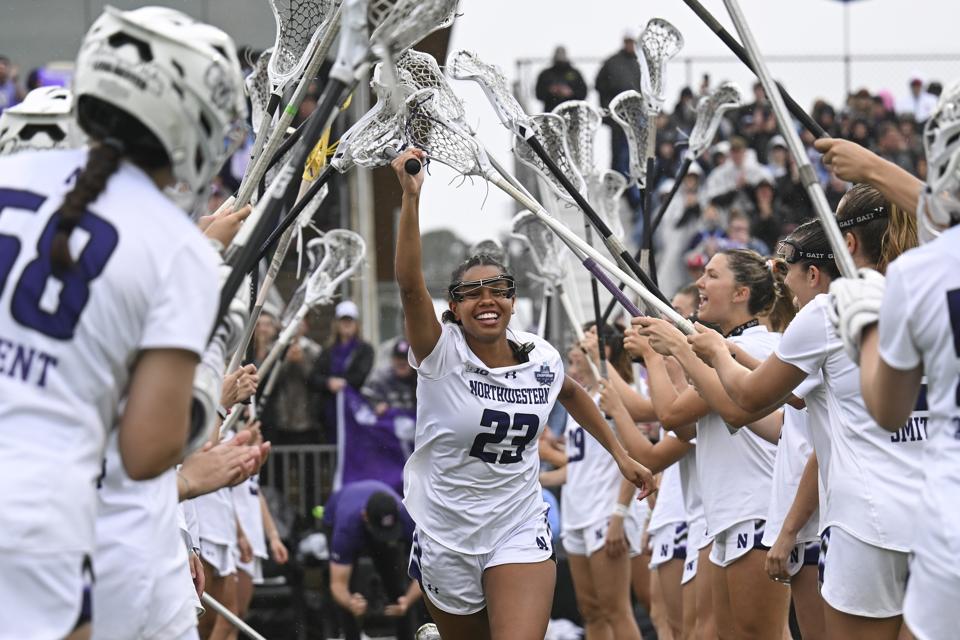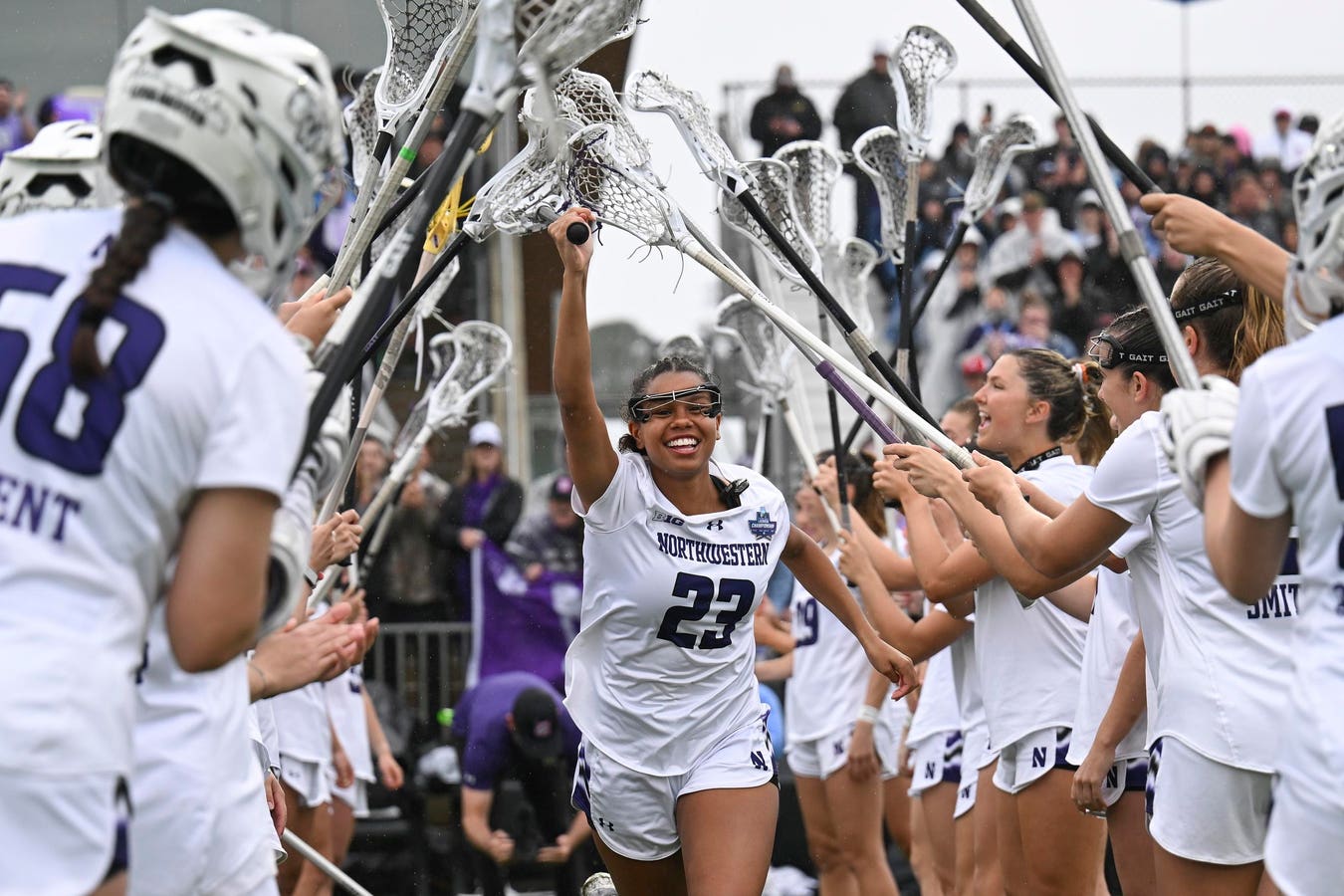
CARY, NC – MAY 28: Samantha White of the Northwestern Wildcats before the Division I Women’s Lacrosse Championship against Boston College at WakeMed Soccer Park, Cary, North Carolina. May 28, 2023 Photo by Grant Halverson/
NCAA Photos via Getty Images
When growth stalls or the market shifts, survival depends on more than persistence–it demands transformation. Following is a real world case study in what it takes to navigate inflection points, recognize when the old roadmap no longer applies, and take decisive action before it’s too late. For founders staring down uncertainty, this story offers an inside look at the high stakes decisions that separate companies that fade from those that move ahead.
Scott Tsangeos didn’t set out to build software for strength coaches. In fact, the original vision for Olympus was to give strength training athletes the kind of digital community that endurance athletes had in Strava—a sleek, social platform where lifters could log workouts, share progress, and connect with others in the strength world. It never occurred to him he would need a major pivot for his company to survive.
“There was this glaring hole,” Tsangeos says. “Strava had completely overlooked strength training, and I felt like that created a massive opportunity.”
It did—just not the kind he expected.
A Community Without Scale
Scott Tsangeos at Northwestern University’s VentureCat, its annual student startup challenge, at the Kellogg Global Hub. May 22, 2024.
Joel Wintermantle
Olympus launched with a clean interface, a loyal early user base, and a bold mission to unite the strength community online. But the product quickly ran into two existential challenges.
First, growth stalled. “The users we had loved the product—and most of them still use it—but we struggled to create virality,” says Tsangeos. “This kind of product lives or dies on network effects, and we didn’t crack the code on social growth.”
Second, consistently generating revenue was a challenge. Without scale, ads weren’t feasible, and the product wasn’t feature-rich enough to justify a premium subscription. “We were skeptical of compromising the user experience with advertising,” Tsangeos told me. “In hindsight, I would’ve brought in someone with deep digital marketing or influencer experience. Instead, we tried to hack it ourselves.”
By the end of that chapter, Olympus was at a fork in the road. “It was either figure something out that worked—or shut down. The team morale stayed strong because we loved the product. But it was clear we didn’t have a business.”
A Hail Mary Email
Northwestern head coach Joe McKeown during a Big Ten women’s basketball game between the Northwestern Wildcats and the Iowa Hawkeyes on January 28, 2025, at Carver-Hawkeye Arena, Iowa City, IA. (Photo by Keith Gillett/Icon Sportswire via Getty Images)
Icon Sportswire via Getty Images
The lifeline did not come from a pitch deck or a VC meeting—but from a cold email.
Since he was a graduate student, Tsangeos reached out to the head of Northwestern University’s Olympic Sports Performance. “I asked how they tracked training data. And their answer shocked me,” he says.
Coaches preferred pen and paper over apps. It was faster, more flexible, and less distracting for athletes. But they knew they were missing out on something big: data. They needed software that could turn handwritten notes into actionable performance insights—something that could reduce injury risk, track progress, and improve outcomes, but without changing the way they worked.
“They basically told us the ideal product,” Tsangeos says. “It was a wake-up call. We had been building something cool. But this was something that was actually needed.”
Burning the Boats
The Olympus team pivoted fast—and hard.
They realized they needed to turn the handwritten data into insights via software. Now coaches collect the completed workout cards, and scan them to get a digital PDF which they upload into the software; it reads the handwriting and creates charts, dashboards, and analytics. The coaches can then analyze trends and performance metrics on the web portal. Olympus also sends the results to a mobile app for the athletes to review. The original mobile app, built for consumers, found new life as a tool for athlete engagement and remote training.
“We had to be decisive,” Tsangeos says. “It was pivot or die; the choice was clear. We didn’t hedge. We rebranded the company around this new insight: Olympus lets coaches keep the speed of pen and paper, but gives them the power of software.”
The market response was immediate. “Almost every coach we talked to said the same thing: ‘This is exactly what I’ve been looking for.’ It was the first time we felt like we were ahead of the curve.”
From Enthusiasts to Enterprise
Northwestern Wildcats Head Coach Emily Fletcher celebrates with her team during the semifinals of the NCAA Division I Women’s Golf Championship at the Omni La Costa Resort May 20, 2025, Carlsbad, California. (Photo by C. Morgan Engel/NCAA Photos via Getty Images)
NCAA Photos via Getty Images
The problem Olympus now solves is far more specific—and salient–than before.
“Coaches are expected to build faster, stronger, more resilient athletes, and while their coaching is elite, they leave a lot on the table when it comes to using performance data and analytics. We help them do that without forcing them to change how they work,” Tsangeos explained.
Since the pivot, Olympus has raised a small friends and family round, secured multiple grants and accolades, and expanded its footprint with high school and collegiate coaches nationwide. Monthly revenue has climbed steadily since relaunching in January.
And the product development approach has matured, too.
“There’s a huge difference between someone saying they love your free product and someone actually paying for it,” Tsangeos says. “Early on, we mistook positive feedback for product-market fit. Now, we sell before we build. We validate that customers are willing to pay, then prototype the solution.”
Advice to Founders: Bet Big or Go Home
Looking back, Tsangeos believes many early-stage startups die not from one bad decision—but from death by a thousand hedges. They are often afraid to pivot – and they are really afraid to pivot significantly. But that can be a huge mistake.
“If you’re going to pivot, burn the boats,” he told me. “As a startup, you can’t afford to straddle two directions. I’d rather fail fast and hard than compound small failures until it’s too late to fix.”
Olympus is far from the company it started as—but for Tsangeos, that’s the point: “The product changed. The market changed. What didn’t change was our mission to serve athletes. Now we’re doing it by helping the people who coach them.”

